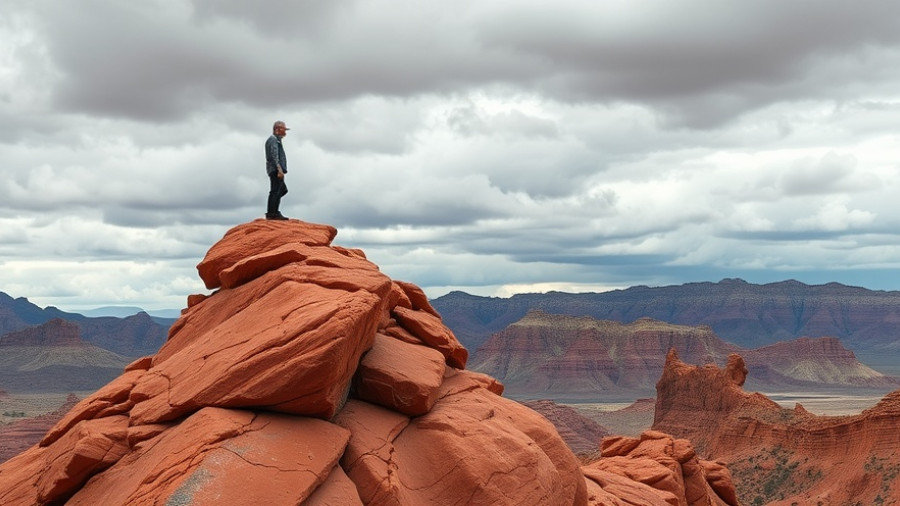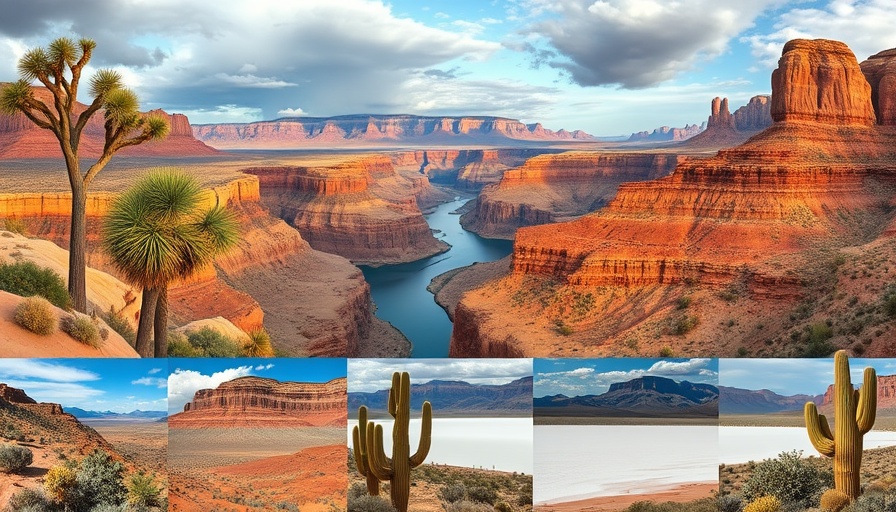Vast, Roadless Adventure: Why Gates of the Arctic National Park Stands Apart
Imagine a land where mountains stretch untouched, rivers flow unimpeded for miles, and the night sky glows with the aurora borealis. Gates of the Arctic National Park is that rare place—one of the last untamed wilderness parks left on earth. With no roads, no trails, and hardly a human-made mark in its expanse, this park offers an experience of pure, unvarnished nature that leaves visitors in awe. But its remoteness can foster uncertainty: How do you prepare for such a journey? What do you gain by venturing so far off the familiar paths?
Located deep in Alaska’s Brooks Range, Gates of the Arctic National Park covers over eight million acres—that’s larger than some U.S. states—yet it remains virtually unchanged except for the persistent forces of nature that have shaped it for millennia. The region is not just a destination; it’s a living reminder of how the world once was, before development and technology altered wild landscapes. For those who seek to understand true wilderness—where caribou roam, wild rivers meander, and ecosystems endure much as they have for over 10,000 years—this park is an essential case study. The wildness comes with risk and reward, which is why exploring Gates of the Arctic demands respect and thoughtful preparation.

Where Wilderness Means No Roads: The Importance of Preserving Untouched Land
For many, the definition of a national park includes visitor centers, marked trails, and easy car access. Gates of the Arctic National Park defies these expectations, maintaining its wild status by remaining roadless and trail-free. It’s the largest of the truly wild parks in the National Park System, and this absence of infrastructure is intentional. Here, the commitment to wilderness protection ensures that entire intact ecosystems can thrive, largely unaffected by modern human interference. The park serves as a global example of what ecological preservation really means, emphasizing living with the land rather than shaping it to our needs.
The challenges of visiting such a place cannot be underestimated. Gates of the Arctic is accessible only by small aircraft or ambitious trekking from remote villages, making every trip an adventure in itself. But it’s these very challenges that highlight the park’s value: By limiting access and amenities, the park preserves the integrity of its environments and honors the traditional lifestyles of peoples who have called the Brooks Range home for millennia. Those who make the journey become stewards, witnesses to caribou migrations, glacier-carved valleys, and stories written in landscapes older than recorded history. Leaving behind expectations of convenience, visitors discover an untamed world—one as dazzling as it is daunting.

Why Exploring Gates of the Arctic National Park Changes Your Perspective on Wilderness
As an expert authority charged with both protection and education, Gates of the Arctic National Park and Preserve demonstrates the powerful benefits of true wildlands. The park is a living laboratory for scientists and a sanctuary for adventurers, offering unfiltered nature in a world that increasingly values convenience over conservation. The absence of artificial boundaries—no roads, no established campsites, no crowd-control fences—means every experience is deeply personal, shaped by the visitor’s will and the landscape’s mood.
Those who enter Gates of the Arctic often find themselves not only exploring a unique part of Alaska, but also rethinking human relationships with the land. By floa ting along six federally-designated Wild and Scenic Rivers or tracing the ancient paths of caribou, visitors can witness ecological processes that have unfolded undisturbed for centuries. There’s a deeper responsibility here, too: preserving traditional lifestyles and cultural connections for Alaska Natives who live with the land. For anyone passionate about nature, adventure, cultural history, or environmental science, the park delivers lessons unavailable in more developed or managed destinations.
Untouched Beauty: The Evolution of a Wild Landscape in Alaska’s Brooks Range
Stepping into Gates of the Arctic is like stepping back in time. The land’s story is carved into its jagged mountains and slow-moving glaciers. Over thousands of years, glacial ice has shaped valleys, carved out the beds of rivers, and created a complex tapestry of tundra, wetlands, and boreal forest. In this setting, six rivers have earned the national Wild and Scenic designation, offering some of the purest floating routes in the country. These waterways become both highways for wildlife and windows into the past, where every bend tells a new story of survival and adaptation.

The park’s remote splendor is also a living testament to the adaptability of people. For more than 10,000 years, indigenous communities have sustained themselves in harmony with the seasons and the migration of animals. Preserving these traditional ways of life, while still safeguarding the ecological health of the region, is a priority for park management. Each step in this wild expanse is a reminder that land can be lived with and not just lived on—and that knowledge, both ancient and scientific, is necessary to understand and protect such a rare ecosystem.
Understanding Wilderness: Lessons from an Intact Ecosystem
Gates of the Arctic doesn't just challenge visitors physically; it invites them to confront what true wilderness means in the modern age. With so few places like it remaining across the globe, it serves as a living classroom for anyone interested in climate, animals, or the intricate relationships that sustain life. As agencies and scientists monitor caribou with GPS collars to uncover the mysteries of their migrations, visitors gain insight into the delicate balance needed to maintain such a finely tuned environment.
For outdoor educators, conservationists, and anyone curious about the world’s last wild places, the park’s preservation-oriented approach becomes a model worth studying. There’s no buffer between the visitor and the environment: every choice made here—from how you travel to how you camp—has consequences for the landscape and wildlife. This direct connection sparks a profound respect for nature’s complexity, showing why true wilderness isn’t just a resource, but a legacy to be learned from and protected.

A Commitment to Living with the Land: The Park’s Unique Mission
The philosophy guiding Gates of the Arctic National Park and Preserve is clear: preserve wild ecosystems and honor the deep history of human interaction with the land. This mission is rooted in the belief that humans can be stewards as much as visitors. The park’s management emphasizes intactness not only for ecological reasons, but also to allow traditional lifestyles to continue in the Brooks Range. Living with the land, rather than shaping it, is not just a theme but a guiding principle that translates into all park policies.
Because of its focus on authentic wilderness, the park’s approach is as much about education as preservation—it invites people to learn how to experience, respect, and protect truly wild places. Instead of building infrastructure, the park prioritizes developing an understanding of Alaska’s changing landscapes, supporting research, and providing information to help visitors plan safe, responsible expeditions. This balance between access and safeguarding is essential for the park’s future. As the world changes, the park continues to serve as a touchstone—a place where nature and human history co-exist, and where the wild remains both untamed and inviting.
What Visitors Experience: Real Stories from Unforgettable Journeys
Every trip into Gates of the Arctic National Park creates stories that linger long after travelers return home. For those fortunate enough to experience its vastness, the landscape is unforgettable, filled with moments of breathtaking beauty and stark realization of just how rare such wildness is. Reviews from past visitors highlight not just the scenery, but also the transformative sense of adventure and perspective gained from venturing so far from civilization.
Our plane dropped us off in the national park righ by the Ambler River. The location was breathtaking! A sight I will honestly never forget! Turquoise river and mountains in the background. I just wished I could've spent more time in the park to see more!
Like countless others, visitors find that the challenges and mysteries of Gates of the Arctic National Park only add to its allure. The tranquil rivers, striking mountains, and endless daylight of summer create memories that endure, and the longing to return is as powerful as the first awe-inspiring view from the bush plane. For anyone searching for authentic adventure and lasting connection to the earth, this park promises—and delivers—a once-in-a-lifetime experience.
What Wilderness in the Modern Age Really Means
Gates of the Arctic National Park stands as a beacon for conservation-minded travelers and scientists, representing the possibility of preserving wild places in a rapidly changing world. It challenges every visitor to consider the real meaning of wilderness—not just as a backdrop for adventure, but as a living, breathing place that demands respect and care. As an organization, the park sets the standard for stewardship and education, modeling how natural treasures can be protected while still inviting meaningful human connection.
With its sweeping vistas, freedom from roads, and focus on intact ecosystems, Gates of the Arctic National Park is more than just a remote corner of Alaska—it's a lesson in balance, history, and hope. Its careful protection ensures the park will remain as wild tomorrow as it is today, inspiring new generations to value not just what is around, but what is truly wild and worth preserving. For anyone compelled by the idea of real wilderness, Gates of the Arctic National Park is both a destination and a source of inspiration.
Contact the Experts at Gates of the Arctic National Park and Preserve
If you’d like to learn more about how Gates of the Arctic National Park could benefit your understanding of wilderness and ecological preservation, contact the team at Gates of the Arctic National Park and Preserve.
📍 Address: Alaska, USA
📞 Phone: +1 907-459-3730
🌐 Website: https://www.nps.gov/gaar/index.htm
Gates of the Arctic National Park and Preserve Location and Availability
🕒 Hours of Operation: Contact the park for specific hours or planning information.

 Add Row
Add Row  Add
Add 





Write A Comment